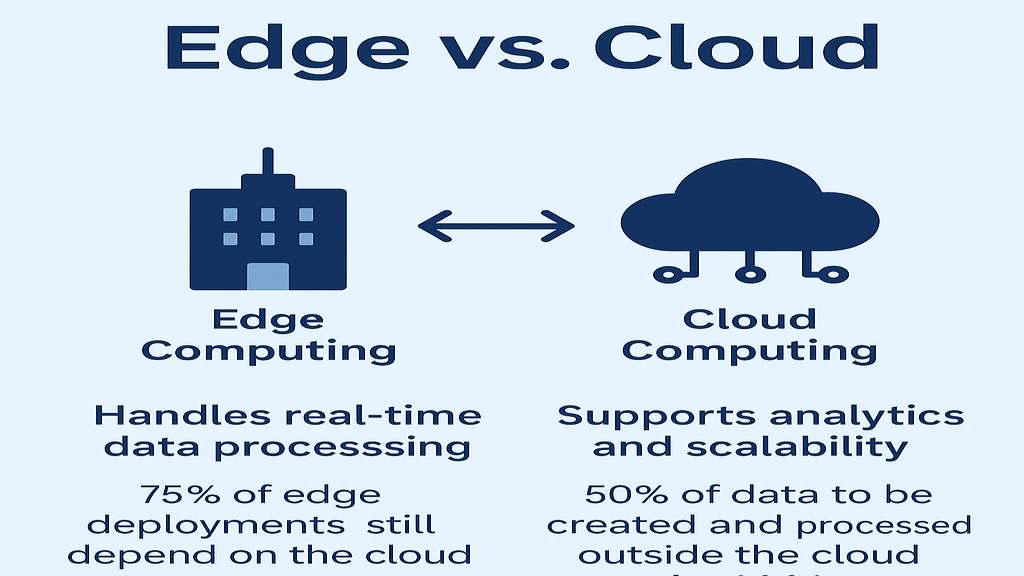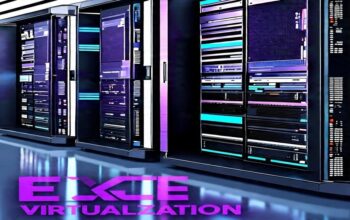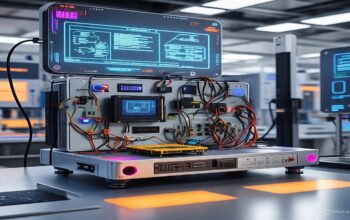Covered Contents
ToggleIntroduction
The technology environment is changing rapidly. As edge computing gains traction across sectors and cloud platforms come of age at scale, the talent struggle is no longer about full-stack developers or DevOps engineers—it’s between Edge Developers and Cloud Engineers. But the argument is not merely about who makes more or works with more sophisticated tools; it’s about strategic significance, infrastructure overhaul, and future-proofing.
Understanding the Roles: Edge Developers vs. Cloud Engineers
Who Are Edge Developers?
Edge developers are leading the way in next-generation computing. Their role is to design and develop applications that run natively on edge nodes—localized computing resources such as embedded devices, intelligent gateways, and micro data centers positioned near the data source. Unlike traditional developers who rely on centralized cloud platforms, edge developers tackle latency-critical challenges in environments constrained by limited bandwidth, intermittent connectivity, and tight power or space restrictions. Their work is vital in scenarios requiring real-time data processing, such as autonomous vehicles, industrial robots, smart manufacturing, and mission-critical IoT implementations.
Edge Deployment Environments
Edge developers operate across a wide range of environments that demand both flexibility and precision. Common deployment targets include Multi-access Edge Computing (MEC) platforms, industrial controllers, and on-premise edge servers. Each setting requires developers to adapt to the specific computational, networking, and environmental constraints of edge infrastructure.
Essential Technical Skill Set
To succeed in edge development, professionals must blend software engineering with low-level hardware integration. Proficiency in C, C++, and Rust is typical, supported by expertise in real-time operating systems (RTOS) and direct hardware interfacing using protocols like MQTT, Modbus, and OPC UA. They also utilize edge AI frameworks such as TensorRT, OpenVINO, and ONNX Runtime to deploy lightweight, efficient machine learning models on edge devices equipped with accelerators like NVIDIA Jetson, Intel Movidius, or Google Coral TPU.
Lightweight Deployment & Runtime Management
Effective deployment at the edge demands efficiency and resilience. Edge developers frequently use lightweight container runtimes such as Docker, K3s, and EdgeX Foundry to manage application packaging and orchestration in constrained environments. They also prioritize over-the-air (OTA) updates, secure device management, and resource-aware orchestration, ensuring consistent operation even under tight compute and storage limits.
Security and Compliance at the Edge
With edge devices processing sensitive data closer to its point of origin, security is a foundational responsibility. Edge developers must implement best practices in encryption, secure boot mechanisms, and align with evolving edge-specific regulations to ensure data integrity, privacy, and regulatory compliance in decentralized systems.
Why Edge Developers Matter More Than Ever
According to Gartner, by 2026 over 50% of enterprise-generated data will be created and processed outside traditional centralized data centers. As this trend accelerates, edge developers are becoming indispensable—not simply extending the cloud, but fundamentally redefining computing. Their work enables localized intelligence, minimizes latency, and empowers the real-time digital infrastructure necessary for the industries of the future.
Who Are Cloud Engineers?
Cloud engineers are principal architects of modern digital infrastructure. They are responsible for designing, deploying, and operating services on centralized cloud platforms such as Amazon Web Services (AWS), Microsoft Azure, and Google Cloud Platform (GCP). Their work focuses on building scalable, highly available, and globally distributed environments capable of supporting enterprise-grade applications and complex data workflows. As cloud computing reshapes IT operations, these professionals empower organizations to deploy agile, cost-effective, and resilient infrastructure.
Working Across Cloud Environments
Cloud engineers operate across public, private, and hybrid cloud environments, adapting architectures to meet varying business and regulatory needs. They leverage cloud-native frameworks to deliver modular and resilient services, enabling seamless scalability and rapid deployment across global network.
Core Technical Skill Set
These engineers are proficient in Infrastructure as Code (IaC) practices, utilizing tools like Terraform and AWS CloudFormation to automate resource provisioning and enforce consistent configurations. They also design and manage serverless and microservices-based architectures, minimizing operational overhead while maximizing flexibility and scalability. Their role frequently overlaps with DevOps, requiring deep expertise in CI/CD pipelines, Kubernetes orchestration, and modern observability platforms such as Prometheus, Grafana, and AWS CloudWatch.
Security, Compliance, and Governance
Security is foundational to cloud engineering. Professionals in this role ensure that cloud environments meet strict compliance standards—including ISO 27001, SOC 2, and NIST—by implementing best practices in encryption, identity and access management (IAM), and secure networking. This governance is crucial as more organizations transition mission-critical applications, data storage, and AI workloads to cloud infrastructure.
The Strategic Role of Cloud Engineers
As companies increasingly rely on cloud platforms for essential operations—from SaaS products to data lakes and machine learning pipelines—cloud engineers serve as strategic enablers, aligning technological infrastructure with core business goals. They ensure that innovation is scalable, secure, and aligned with both performance and compliance needs.
Industry Use Cases:
Each role contributes uniquely to specific use cases—centralized scalability versus real-time edge intelligence.
Cloud Engineers: Experts in Scalable, Centralized Solutions
Cloud engineers lead in architecting large-scale digital ecosystems that require global availability, high reliability, and flexible resource allocation. They build and manage services on cloud platforms like AWS, Microsoft Azure, and Google Cloud Platform, powering mission-critical applications for global enterprises.
Key Use Cases:
➤Cloud-Native SaaS Development
Cloud engineers design scalable SaaS platforms such as Salesforce, Zoom, and ServiceNow, ensuring consistent performance across millions of users.
➤Enterprise Data Analytics & Warehousing
Centralized data processing and analytics through platforms like Snowflake, Amazon Redshift, and BigQuery allow enterprises to extract insights at scale.
➤Global E-commerce and Streaming Platforms
Businesses like Netflix, Shopify, and Spotify rely on cloud-native infrastructure to serve millions of users with minimal downtime and maximum performance.
Edge Developers: Driving Low-Latency Intelligence at the Edge
Edge developers specialize in deploying applications on localized compute environments—closer to the data source—for faster decision-making and minimal latency. Their work is vital in sectors where real-time performance is a competitive advantage.
Key Use Cases:
➤Autonomous Mobility & Vehicles
Real-time processing of LiDAR and sensor data enables safe navigation without depending on the cloud. This is a cornerstone for automotive AI, as reported by EdgeIR.
➤Smart Manufacturing & Industrial IoT
Edge developers power use cases like predictive maintenance, anomaly detection, and robotic automation, improving uptime and reducing operational costs on the factory floor.
➤Retail & Logistics Optimization
In-store edge computing enables real-time inventory tracking, computer vision for self-checkouts, and warehouse automation, reducing latency and enhancing customer experience.
Salary Trends and Market Demand (2025 Projections)
Role | Average Salary (US) | Market Growth Rate | Top Hiring Industries |
Cloud Engineer | $120K – $155K | Moderate (10–15%) | Finance, Healthcare, SaaS, Consulting |
Edge Developer | $135K – $165K | High (20–30%) | Automotive, Manufacturing, Telecom |
➥According to WWT Insights, edge-related roles are growing faster due to the push for distributed computing and on-site intelligence.
➥Cloud remains dominant in traditional enterprise IT, but hybrid edge-cloud systems are increasing the demand for cross-skilled professionals.
Challenges and Considerations
Domain | Key Challenges |
|---|---|
Cloud | Vendor lock-in, data egress costs, latency limitations |
Edge | Hardware constraints, fragmented standards, real-time debugging |
➤Although both edge and cloud environments provide revolutionary capabilities, each has its own technical and operational issues. Realizing these constraints is indispensable to creating robust, scalable, and efficient solutions.
Cloud Engineering Challenges
Cloud engineers commonly encounter the following challenges:
Vendor Lock-In: Excessive dependence on one cloud provider may diminish flexibility and raise long-term expenses.
Data Egress Charges: Extracting large data sets out of the cloud can be costly, impacting total cost of ownership.
Latency Sensitivity: Centralized cloud infrastructure will add unacceptable delays to time-sensitive applications.
Expert Insight: Scalability, compliance, and performance consistency across multiple regions and hybrid environments are a fundamental challenge for cloud teams.
Edge Development Challenges
Edge developers have to address an uncommon set of challenges, including:
Hardware Constraints: Edge devices tend to have limited processing capacity, memory, and energy supply.
Absence of Standardization: Highly fragmented hardware and software ecosystems hinder integration and scalability.
Real-Time Debugging: Edge debugging necessitates tools and skill sets optimized for remote, low-bandwidth environments.
Edge vs. Cloud: Not a Competition
➤In spite of the constant edge computing vs. cloud platform comparison, the industry is in agreement: the future isn’t about one being better than the other—it’s about integration. With changing enterprise demands, the true benefit lies in orchestrating the seamless collaboration between edge and cloud.
➤More than 75% of edge deployments continue to use cloud-based infrastructure for orchestration, storage, or centralized analytics, reports EdgeIR. The edge only processes real-time data, and the cloud hosts long-term data management, AI model training, and scalability.
➤At the same time, Gartner predicts that over 50% of enterprise data will be created and processed outside of traditional data centers or public clouds by 2026. This trend highlights the importance of localized compute, particularly in time-sensitive or bandwidth-limited contexts.
Conclusion:
Edge computing is in control of latency-critical spaces by 2025 (manufacturing, healthcare, smart cities), with cloud computing still the ruler of scalable, collaborative workloads. The future belongs to intelligent hybrid systems where:
“Edge takes care of the urgent; the cloud takes care of the enormous”


